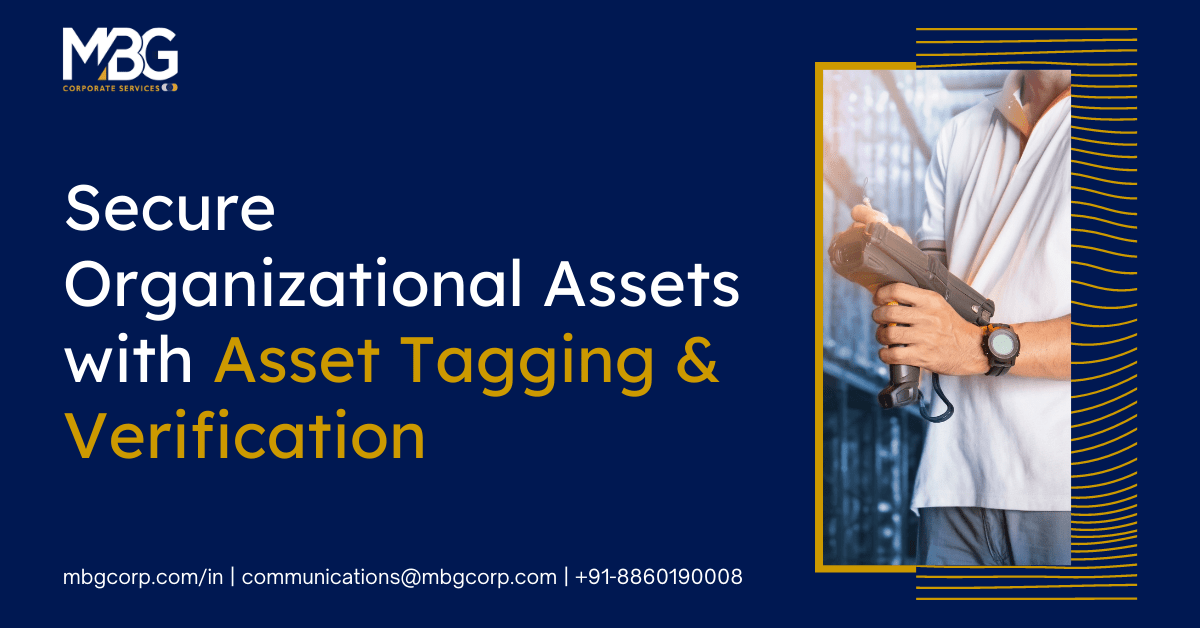Secure Organizational Assets with Asset Tagging and Asset Verification
August 11, 2021

What is Asset Tagging and Asset Verification?
It is intuitively easy to understand asset verification as the authentication of an invested property or holding for safety and security. So, what is ‘Asset Verification’ in business? The meaning is similar.
Asset Verification is the authentication of assets on the balance sheet by auditors who verify its accuracy and completeness of detail. It is closely related to Asset Audit.
What is Asset Audit ?
What is Asset Audit is a physical verification of fixed assets to align with the balance sheet or other official records. It is also known as a Physical Asset Verification Audit. A Physical Asset Verification Audit is essentially what is physical verification of fixed assets and what is asset verification as a physical process. This Fixed Asset Verification process is an imperative for most businesses today, and the Fixed Asset Audit report or the Fixed Asset Verification report are critical documents.
The ‘Asset Tagging’ meaning is less straightforward. Asset Tagging is not an everyday use phrase, but it is an important part of business. What is Asset Tagging? Asset Tagging is a means of uniquely identifying each individual asset by fixing labels or ‘tags’ on them. This assigned ‘unique ID’ type identification is essentially what is Asset Tagging.
Asset Verification and Tagging are a vital part of security and risk mitigation in today’s fast-moving world when financial misappropriation is on the rise. With high capital and revenue expenditure against a growing number of compliance requirements, it is vital that proper inventory records are kept, and Fixed Asset verification done. What is asset verification in terms of process cost, especially through a good Asset Verification service, is more than offset by the cost of not doing the Asset Verification, or indeed, Asset Tagging or not doing what is Asset Audit done right.
Asset Verification and Asset Tagging meaning the identification, tracking, and controlling of assets with tags is a must to avoid asset misappropriation and maintain smooth operational continuity.
Benefits of Asset Tagging and Asset Verification
- Regular monitoring and tracking of assets
- Reduces theft
- Saves time and money
- Correct financial reporting
- Superior monitoring of movement between locations
- Efficient resource allocation
MBG’s Asset Tagging and Asset Verification services:
Our Asset Tagging and Asset Verification Service includes the following
1-Preparation of Fixed Asset Register: Asset tagging begins with a Fixed Asset Register- a detailed list of all fixed assets owned by a business. This is thus a key part of the fixed asset verification process. The Fixed Asset Register maintains accurate financial information of every asset. It exists in two formats- Excel spreadsheet and Fixed Asset Management software.
Key Benefits of Fixed Asset Register :
- Complete information on asset history, current status, and location for audit trails
- Compliance with statutory requirements
- Accurate Fixed Asset value in the balance sheet
- Ensures appropriate level of insurance cover at the optimal premium cost
- Facilitates a smooth and speedy asset audit and asset verification process
- Simplifies month and year-end processes by providing up-to-date asset data
- Improves asset utilisation across the business and prevents duplication of asset purchase
2-Fixed Asset Tagging : Fixed Asset tagging, meaning labelling the organization’s physical assets with tags as a tracking mechanism, provides a stable foundation for inventory control.
Key Benefits of Fixed Asset Tagging :
- Increased Fixed Asset security and reduced theft and pilferage
- Better management of physical capital
- Statutory compliance
3-Physical Verification of Fixed Assets : What is Physical Verification of Assets? Physical Verification of Fixed Assets is a process carried out by auditors, consultants, or authorities verify that a company’s physical assets exist. This is important for asset tracking and the recovery of lost assets, if any.
Key Benefits of the Fixed Asset Verification process :
- Consolidated physical report for all the sites and assets
- Reconciliation between physical count and book count
- Computing differences, and identifying the reasons behind the discrepancies
- Providing the physical Fixed Asset Verification Report
- Assure statutory auditor of compliance with Companies Act
4-Physical Verification of Inventory : Is the process of cross-checking financial records with managing a physical inventory or record.
Key Benefits of Physical Verification of Inventory :
- Accurate and well managed inventory with proper financial records of the company
- Evidence for manufacturing or retail-based businesses with large balance of assets and capital
- Accurate presentation of inventory value in financial records and settlements
The Asset Tagging and Verification process ensures that the safety and security of your assets and inventory is taken care of so that you can focus on your core strategy and operations. At the end of the day, the object of verification of assets and asset tagging, beyond statutory compliance, is the performance and growth of your business.
Our Service Deck:– Asset Tagging and Asset Verification Services
Watch the below video to know more about Asset Tagging and Asset Verification Services:









